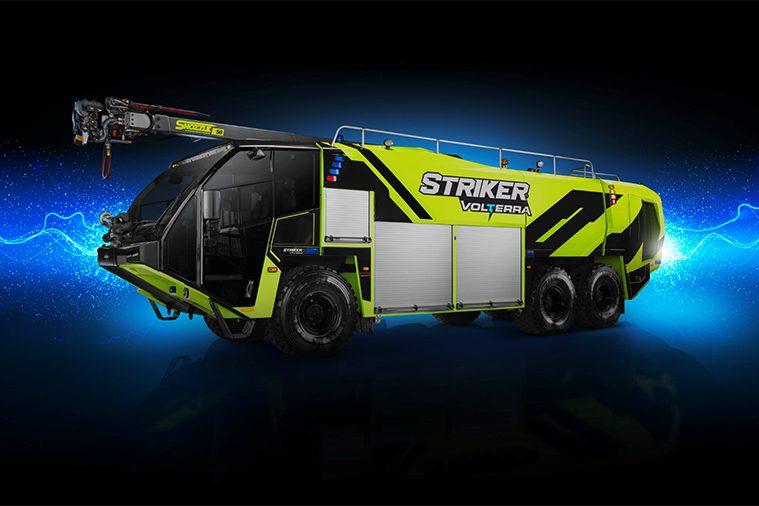After the successful presentation of the LF 20 KatS with the integrated hydraulic swimming pump at Interschutz 2015, the Albert Ziegler GmbH has demon-strated various usage possibilities of this pump. The location of the fire brigade of Mülheim an der Ruhr has offered optimal geographic conditions for this. On September 4th and 5th, 2015, demonstrations of the LF 20 KatS and the Ziegler hydraulic swimming pump took place at the fire brigade of Mülheim an der Ruhr. An increasing number of meteorological events with numerous floodings as a result of heavy rain gave the impulse for this innovation developed by Ziegler. The LF 20 KatS provides the optimal basis to integrate the Ziegler hydraulic pump in the compartment. This vehicle also contains the proven Ziegler ALPAS super-structure, the airbag and belt pretensioning System Z-Protec, the ambient lighting Z-UB4K with the Top-Integro as well as a portable fire pump PFPN 10-1500 Ziegler Ultra Power 4 in the lowered compartment. In addition, the vehicle has a Ziegler hygiene Board PUSH and 8 removable car-tridges for the relocation of hoses while driving. New is that the hydraulic pump system can be used to transport water to the centrifugal fire pump of the vehicle. Due to the inlet pressure the performance can be doubled. In operation without pressure this pump can deliver up to 10,000 liter of water per minute along with the vehicle pump, the portable fire pump Ziegler UP 4 and a submersible sewage pump ATP20R. In addition, the hydraulic pump allows the usage to remove water from large deep or inaccessible waters without alarming special devices. Furthermore, it is perfectly suited for applications with moderate water consumption where alerting of specialized equipment would not be justified. The hydraulic pump is installed compactly between the compartments in the front of the body. This pump has hydraulic hoses each of a length of 30 m. With a hydraulic hose reel the hoses are rolled up electrically. Ziegler discusses two modes of operation of the pump. One way is to use the pump in series with the pump of the vehicle. It is fed with inlet pressure in the vehicle pump and a large amounts of wa-ter under pressure can be pumped up. Water extraction can be located 30 m away from the vehi-cle. Large differences in height between vehicle and open waters do not constitute any obstacle. The second mode is to use the hydraulic pump parallel to the vehicle pump. Thereby a a maximum flow rate can be achieved. The water extraction can also be located 30 m away from the vehicle.
The pump can be used in many ways. One possibility would be for example flooding, where a max-imum flow rate is necessary. Furthermore, the hydraulic pump allows not only the water extraction, but also the operation without pressure from great depths of up to 30 m. Unfavorable or difficult ac-cessible terrain represent no obstacles. In addition, with the hydraulic pump a maximum pressure to deliver water over long distances or to supply turrets with great performance can be achieved. Water extraction from a bridge that extends 11 meters above the Ruhr has aroused great interest among the participants of the demonstration. The fire brigade Mülheim an der Ruhr, Ibbenbüren, Duisburg, representatives of the fire brigades of Velbert, Wesel and Wesseling and Polish delega-tions were on-site during the demonstrations. At the second demonstration, an exercise of the vol-untary fire brigade of Mülheim at the harbour of the river Ruhr was carried out. Especially, the hose laying over longer distance with three inch-hoses and the maximum pressure support has ensured attention. In summary, it can be highlighted that placing the hydraulic pump in standard firefighting vehicles does not lead to any space or weight problems. With respect to the performance, the pre-pressure of the pump allows delivery of 4000 l/min water through a vehicle fire pump with 2000 l/min. In ad-dition, the system is ready for usage very quick and can easily be installed by only 2 firefighters, so that no request for special vehicles with removable loaders, trailers or other equipment is neces-sary. With regard to the logistics, there is a further advantage that ordinary hoses can be used to transport the water.




































